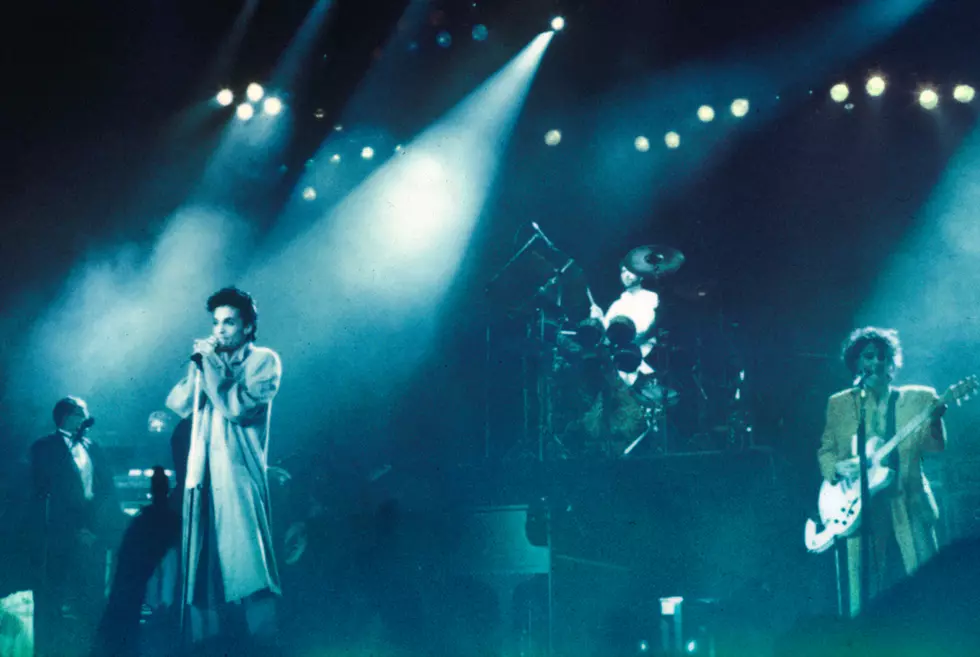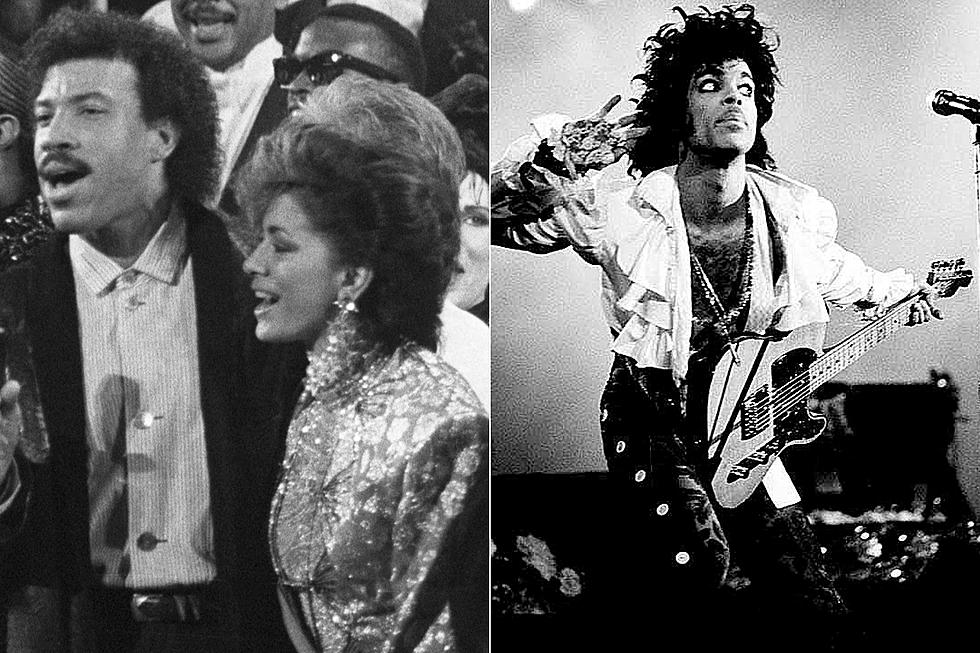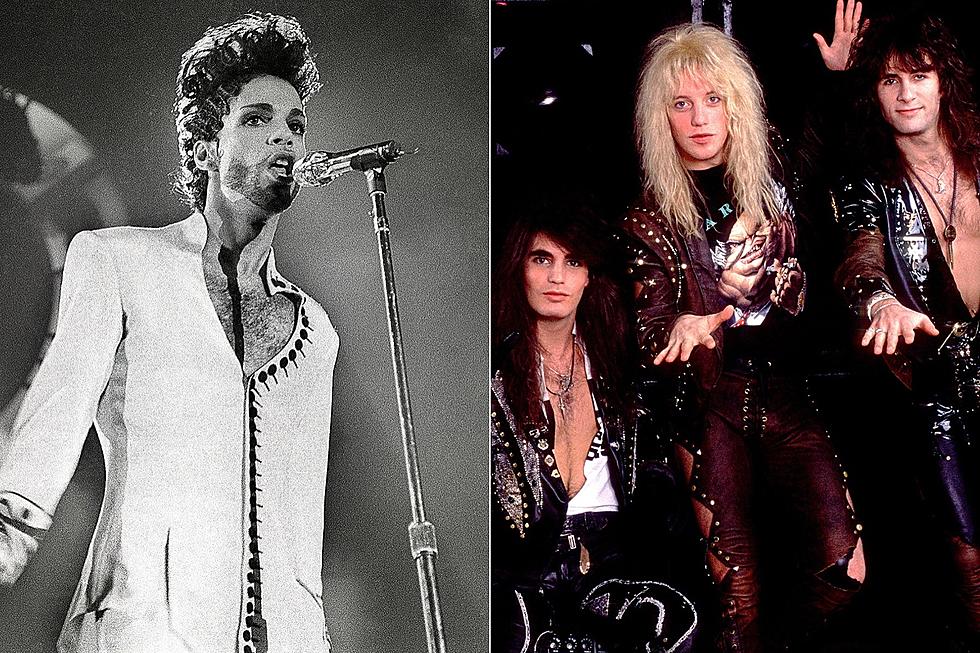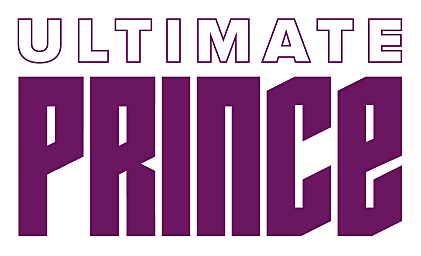
The Moment the Revolution Knew Prince Was Done with Them
In the fall of 1986, Prince dismissed his backing group, the Revolution, following an amazingly successful first half of the decade.
Though initially unnamed, early incarnations of the Revolution could be traced back to 1979, when Prince began experimenting with a band. The group was first featured on 1982’s 1999, and would achieve greater fame with 1984’s landmark release Purple Rain. The album’s massive success gave the band a growing spotlight, which it would enjoy through further releases Around the World in a Day (1985) and Parade (1986).
The Revolution’s classic lineup consisted of guitarist Wendy Melvoin, bassist Brown Mark, Lisa Coleman on piano, Matt "Doctor" Fink on keyboards and drummer Bobby Z.
"We were quirky and odd," Melvoin explained during a 2016 conversation with Billboard. "Each one of us had our own weird abilities and strengths, and it turned into a band."
Watch Prince and the Revolution Perform "Purple Rain"
In early 1986, the lineup was augmented with the additions of guitarist Miko Weaver, and the horn section of Eric Leeds and Matt “Atlanta Bliss” Blistan. Three dancers were also brought on board: Jerome Benton, Wally Safford and Greg Brooks. Suddenly, the Revolution had doubled in size, a fact that didn’t sit well with the core members.
“All of us in the Revolution were a little miffed by it,” admitted Fink in the podcast Prince: The Story of Sign O' the Times. “We were so used to having this tight little family unit and all of a sudden, he brings in these new people.” The feeling was shared among Fink’s bandmates. “We were all talking about it at the time, going, ‘I don't know about this, this doesn't feel right; the chemistry is changing.’"
For their part, the newcomers understood their place. “When Eric and I joined, we called ourselves the Counter Revolution,” Bliss revealed. “We couldn't say we were the Revolution because the Revolution is that quintessential band.”
“There was a Revolution, and now you've got to deal with all of us,” Leeds added. “All of a sudden everybody that had been in the Revolution besides Prince — there were five of them, and also looking up one day and they're now, what? One, two, three, four, five — there are six more. And it was an adjustment for them. It literally was.”
The expanded lineup took a while to get used to, and the change wasn’t welcomed by all members. “We did feel a little bit territorial and possessive of the band,” admitted Coleman. “So when more and more people started coming onstage and at the end of the night like, ‘Baby, I'm a Star,’ we would call it the Bugs Bunny Revue; like, ‘What's going on here? This is turning into like Looney Tunes.’"
Watch the Music Video for "Kiss" by Prince and the Revolution
The musicians got a sense that Prince was yearning for change, and his relationship with the Revolution over the next few months would only exacerbate the matter.
It also didn't help that the Revolution members felt underpaid. “The band had not really been making very much money, and I don't know who instigated it, but someone said, ‘Maybe we should ask for a raise?,’" recalled Melvoin. “It wasn't much, and I'm not even going to get into the price. But it was just the idea of it. It really didn't sit well with him.”
The raise request added tension between Prince and his group. When the Purple One began making changes to his stage setup -- specifically putting the dancers in front of his band -- the Revolution knew they had a problem.
“When those guys were at the front of the stage we were like, ‘It's a sea change, folks,’” Melvoin recalled. “‘Something's happening. It's a sea change.’"
Still, Prince was known for his backstage theatrics, even threatening to break up the band at various points in an effort to motivate the musicians. It wasn’t until the final night of the Parade tour, Sept. 9, 1986 in Yokohama, Japan, that the writing was truly on the wall.
“By the end, the last gig in Japan, he went on a rant,” Brown explained. “He was, you know, smashing stuff onstage and he was pretty angry.”
“He destroyed his Cloud guitar at the end of ‘Purple Rain,’" Melvoin recalled, “but he did it in a way that was a big, ‘Fuck you.’"
“I felt like, ‘Why is he so mad?,’" Coleman added. “I even thought, ‘Did something happen?’ Like, did the crew fuck something up or did something actually happen? But it was just the crest of the wave was just breaking and there it was, and that was it.”
Watch Prince's Final Performance with the Revolution
Following their return to the States, Prince disbanded the Revolution. He told Melvoin and Coleman of the decision over a meal. “[Prince] had a little dinner with us and said, ‘I know that — I know that you guys can't go where I'm gonna go next,'” Melvoin recalled.
“Well, what do you want us to do?” Coleman asked. “And then I remember the words ‘nipple-less bras’ and ‘crotchless panties.’ You know, I mean it got kind of grotesque and, I felt like, ‘No, you can't ask me to do that. That's not what we're doing now.’”
Prince had already envisioned where he wanted to go, both sonically and visually, and it was clear that many of the Revolution’s members would not be good fits for this next stage of his career.
Still, some of the musicians remained, including Leeds, Bliss, Fink and Weaver. These men would stay with Prince through the ensuing years, eventually departing prior to the creation of the New Power Generation. Mark had also been invited to stay, but politely declined Prince’s offer.
“It was never going to be the same as the Revolution," the bassist explained to Billboard decades later. "Once you’re in a group like the Revolution, it’s very hard to go and start playing with someone else. The other bands that he played with … I mean, he loved everybody he played with, but we were family."
Despite some lingering bitterness at the way the Revolution ended, the musicians grew to understand Prince’s decision. “I was at Tower Records one time after (the breakup),” Coleman recalled. “I heard these fans talking, and they were saying, ‘You know the Revolution was a great band, but now, Prince is so hot.’ And so I kind of understood: he still wanted to be hot and not just like suddenly we're Tom Petty or somebody just writing songs.”
Prince’s Bandmates: Where Are They Now?
More From Ultimate Prince









